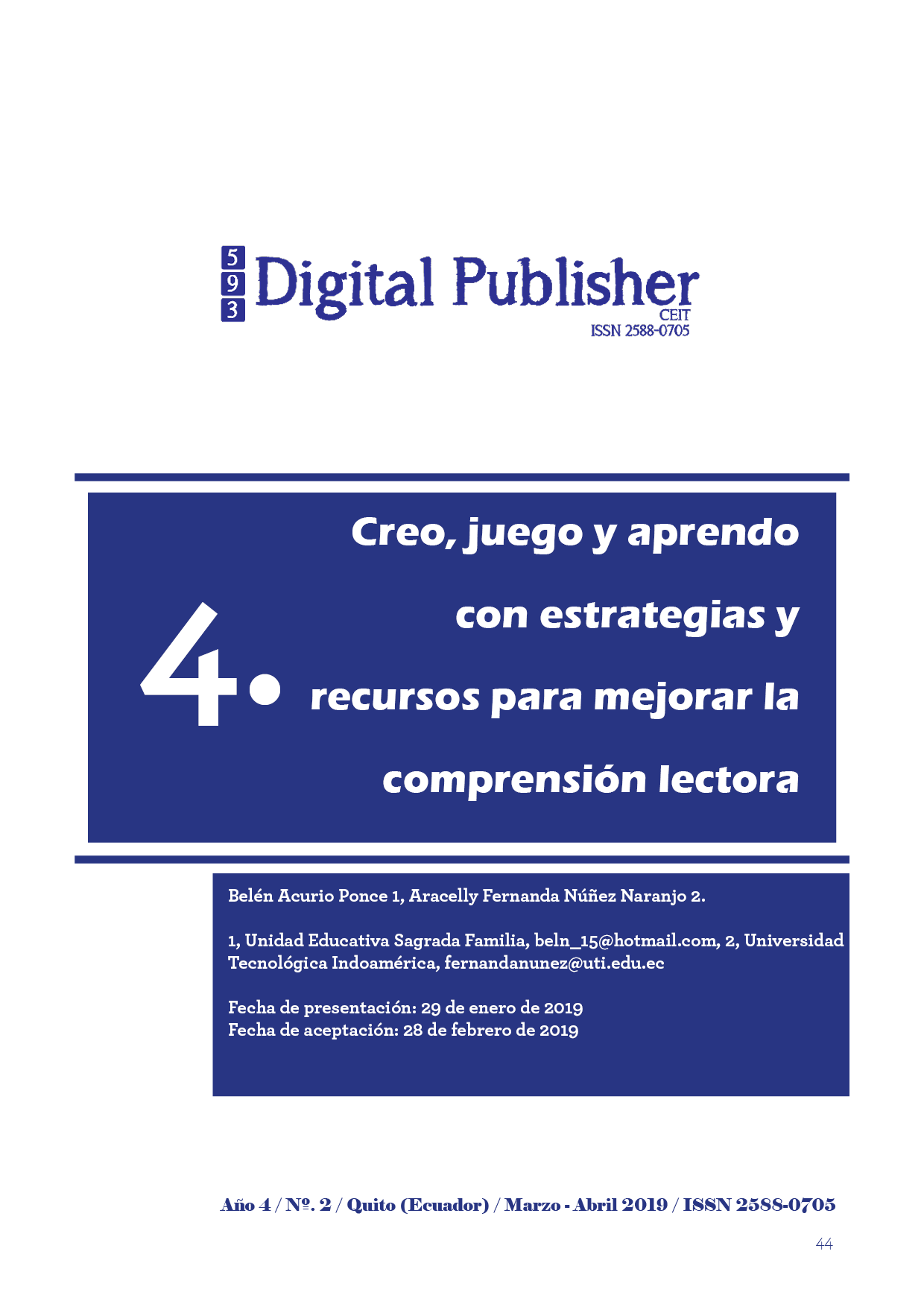Think, play and learn with strategies and resources to improve reading comprehension
Main Article Content
Abstract
This paper analyzes didactic strategies, a set of dynamic and innovative actions that allow the development of reading comprehension, in order to relearn, motivate, understand and stimulate reading skills. The reading comprehension benefits the abilities of the thought like: the analysis, reflection, and synthesis, argumentation inside the process teaching learning in its five levels: literal, inferential, critical-value, appreciative and creative, nevertheless it is presented in the classroom difficulties of comprehension. Teacher action must be relevant and perceptive in order to promote didactic, dynamic, participative and constructive strategies aimed at promoting quality education. The research is field, applied modality and descriptive purpose to analyze the causes, consequences and propose an alternative solution to the problem studied. It has a population of 63 people, the results obtained reflect that there is a low level of comprehensive reading, being the least consolidated level, the appreciative with 63.3%, followed by inferential 51.7% and creative 48.3%. Results that show that students have difficulty in synthesizing, understanding, analyzing and reflecting on the content of the text. Based on this reality, it was decided to develop as a proposal a guide of didactic strategies for the development of reading comprehension, with recreational, participative, innovative and significant activities that promote student participation. In conclusion, the application of didactic strategies improves reading comprehension, empowering thinking skills and communicative skills, building new knowledge in a meaningful and didactic way, through motivation and stimulation to the development of reading skills in students being active, competent and dynamic.
Downloads
Article Details
1. Derechos de autor
Las obras que se publican en 593 Digital Publisher CEIT están sujetas a los siguientes términos:
1.1. 593 Digital Publisher CEIT, conserva los derechos patrimoniales (copyright) de las obras publicadas, favorece y permite la reutilización de las mismas bajo la licencia Licencia Creative Commons 4.0 de Reconocimiento-NoComercial-CompartirIgual 4.0, por lo cual se pueden copiar, usar, difundir, transmitir y exponer públicamente, siempre que:
1.1.a. Se cite la autoría y fuente original de su publicación (revista, editorial, URL).
1.1.b. No se usen para fines comerciales u onerosos.
1.1.c. Se mencione la existencia y especificaciones de esta licencia de uso.

